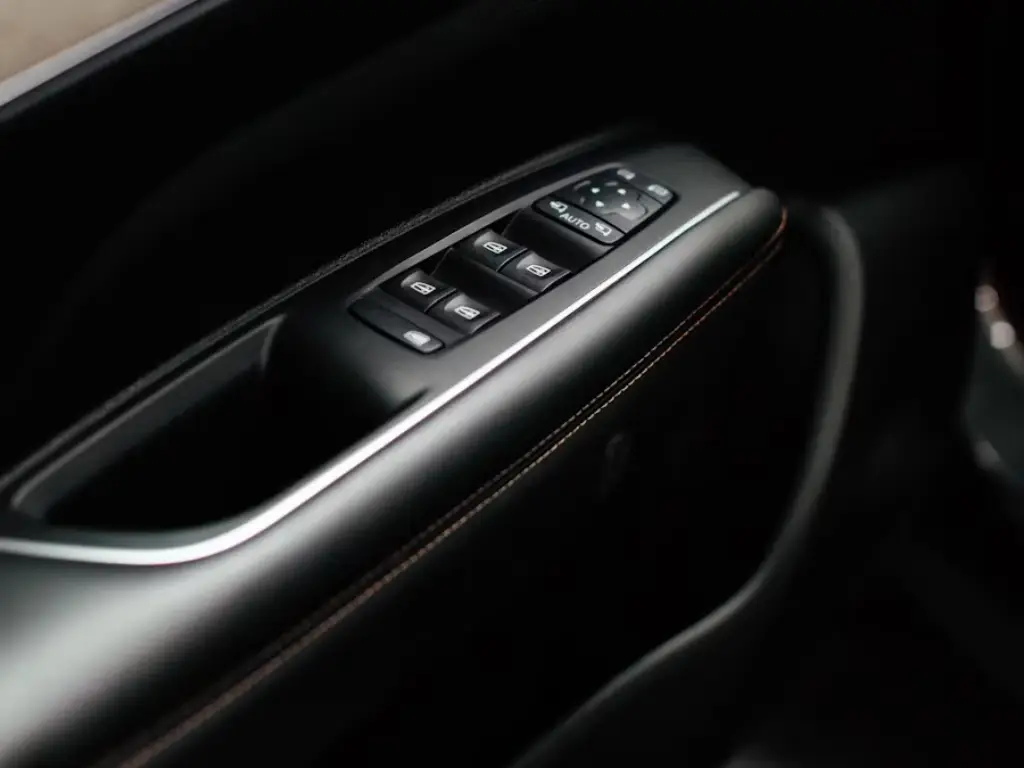Have you ever noticed how even the smallest parts in a car, like oxygen sensors, can make a huge difference in how it runs? These tiny components control emissions and fuel efficiency, ensuring your vehicle performs at its best. But when it comes to replacing them, the debate of OEM oxygen sensor vs aftermarket often arises. Each has its own advantages, and knowing which suits your car best can save you time, お金, and hassle.

What Is an OEM Oxygen Sensor?
An OEM oxygen sensor is a specialized component created by the original equipment manufacturer to perfectly match your vehicle’s specifications. These sensors are meticulously engineered to deliver precise data to the engine control unit (ECU), ensuring optimal fuel-air mixture and reduced emissions. Working with an OEM oxygen sensor manufacturer, carmakers guarantee the same performance and reliability as the original part, making OEM sensors a top choice for those prioritizing quality, 長寿, and seamless integration.
What Is an Aftermarket Universal Oxygen Sensor?
Aftermarket universal 酸素センサー are designed for versatility, fitting multiple vehicle models with some adjustments. Manufactured by oxygen sensor factories, these sensors emphasize affordability and broad compatibility. While they lack the precise tailoring of OEM counterparts, their adaptability makes them an appealing option for cost-conscious users. しかし, variations in design and quality among factories mean some universal sensors may require additional effort for installation or may not deliver the same durability and accuracy.
Aftermarket Universal Oxygen Sensor vs OEM: What’s the Difference?

When it comes to oxygen sensors, choosing between aftermarket universal types and OEM options depends on several key factors. From fitment to cost, each aspect impacts your vehicle’s performance, maintenance, and long-term investment.
Fitment and Installation
OEM oxygen sensors are tailored for specific vehicle models, offering a precise fit that simplifies installation. Mechanics working with OEM parts often complete replacements in under an hour, reducing labor costs. Universal sensors, 一方で, may require additional wiring or adapters to function properly. A sedan owner who purchased a universal sensor for a 2015 model reported delays and higher installation costs due to incompatible connectors, underscoring the challenges of a generalized design.
Performance and Longevity
OEM sensors excel in delivering consistent and accurate data over time. Vehicles equipped with OEM sensors have been documented to maintain engine efficiency for 50,000–100,000 miles before needing replacements. Universal sensors, while functional, may experience wear faster due to their one-size-fits-all approach. Studies have shown that engines relying on lower-grade universal sensors often face misfires and irregular fuel consumption within two years, compromising vehicle performance.
保証とサポート
Reputable oxygen sensor manufacturers often provide robust warranties for their OEM products, covering potential defects and offering customer support. A major auto brand offers a 12-month warranty on its OEM sensors, including free replacements for defective parts. Universal sensors typically come with limited or no warranties. Buyers of universal sensors from discount suppliers report difficulties in obtaining support, leaving vehicle owners without recourse in case of early failure.
Cost Comparison
The upfront cost of OEM oxygen sensors is higher, often ranging from $100–$300, reflecting their specialized design and quality. Universal sensors are significantly cheaper, with prices starting at $30. しかし, hidden costs, such as additional labor for installation or frequent replacements, can diminish their appeal over time. A fleet operator shared that while universal sensors initially reduced expenses, the need for repeated replacements nearly doubled costs over five years compared to using OEM sensors.
OEM Oxygen Sensor vs Aftermarket: How to Choose?
Selecting the right oxygen sensor depends on a careful balance of your vehicle’s needs, how you maintain it, and your financial considerations. Each factor plays a crucial role in determining the best option.
Vehicle Requirements
Your vehicle’s make and model often dictate whether an OEM or aftermarket sensor is the better choice. High-performance or luxury cars, such as a BMW 5 Series or a Porsche 911, are engineered with precision components that rely on OEM sensors for seamless operation. Installing a universal sensor in these vehicles may result in compatibility issues, causing dashboard warning lights or reduced engine efficiency. For older or non-specialized models, universal sensors may suffice without compromising critical systems.
Maintenance Habits
Regular maintenance habits significantly impact the choice of sensor. Vehicle owners who adhere to routine checkups, such as oil changes and emissions tests, can make better use of aftermarket universal sensors, as these are monitored and replaced more frequently. 逆に, if maintenance is sporadic or delayed, the reliability of OEM sensors becomes invaluable. Their longer lifespan ensures stable performance even with less frequent care, reducing the risk of costly repairs caused by undetected sensor failures.
Budget Constraints
Budget often sways the decision between OEM and aftermarket options. A single OEM oxygen sensor might cost $150–$300, making it a larger upfront expense. しかし, its durability and precision often result in fewer replacements, ultimately lowering long-term costs. Universal sensors, priced between $30–$100, appeal to budget-conscious buyers but may incur hidden expenses, such as higher labor costs or quicker degradation. Vehicle owners aiming for short-term savings may lean toward universal sensors, while those prioritizing longevity often invest in OEM options.
Common Myths About OEM and Aftermarket Oxygen Sensors
Misconceptions about OEM and aftermarket oxygen sensors can make it difficult to choose the right one. Let’s debunk some common myths and clarify what’s true when it comes to these essential components.
Are OEM Sensors Always Better?
While OEM sensors are designed for precise compatibility, they are not universally superior in every situation. For vehicles with simpler emissions systems, high-quality universal sensors can match OEM performance without sacrificing reliability. しかし, OEM sensors excel in advanced or performance-focused engines where precision is critical, such as hybrid systems or turbocharged engines.
Are OEM Sensors Too Expensive to Invest In?
The perception that OEM sensors are prohibitively expensive often overlooks their long-term value. An OEM sensor costing $200 can last upwards of 100,000 マイル, minimizing replacement frequency and preventing engine issues. Comparatively, replacing a $50 universal sensor multiple times over the same period may exceed the initial cost of the OEM option, particularly for vehicles with stricter emissions standards.
Does Universal Sensors Fit Any Vehicle?
Despite their “universal” label, these sensors do not automatically fit every vehicle. Compatibility depends on factors like connector type, wiring, and sensor placement. A universal sensor purchased for a 2010 Honda Accord, 例えば, may require splicing or adapter kits to function correctly. Incorrect installations can lead to inaccurate data readings or engine warning lights, which negate their cost advantage.
Are Cheaper Sensors Just as Effective?
Lower-priced sensors may perform adequately for basic needs but often compromise on materials and durability. In some cases, these sensors degrade quickly, leading to frequent replacements. Data from emissions testing has shown that lower-quality universal sensors may fail to meet EPA standards, causing vehicles to fail inspections. Investing in reputable sensors, whether OEM or aftermarket, ensures consistent performance and compliance.
結論
The choice between an OEM oxygen sensor vs aftermarket option depends on your car’s needs, your budget, and how you maintain your vehicle. While OEM sensors offer precision and reliability, aftermarket options provide affordability and flexibility. Understanding these factors ensures your car runs smoothly and efficiently. Ready to find the perfect oxygen sensor for your vehicle? Make an informed decision today and give your car the care it deserves.
よくある質問
Q1: Universal O2 Sensor vs. OEM: Which Is Better?
OEM sensors are better for precision and reliability, while universal sensors are ideal for budget-conscious users.
第2四半期: Does Oxygen Sensor Wholesale Supplier Provide OEM Service?
Many suppliers like COWTOTAL offer OEM services, ensuring factory-grade quality and fitment for specific vehicle models.
Q3: Does the Brand of Oxygen Sensor Matter?
はい, the brand influences quality and performance. Reputable manufacturers produce sensors with superior accuracy and durability.
Q4: Are Universal Oxygen Sensors Good?
Universal sensors are a cost-effective solution but may require additional installation work and have variable performance based on the manufacturer.













